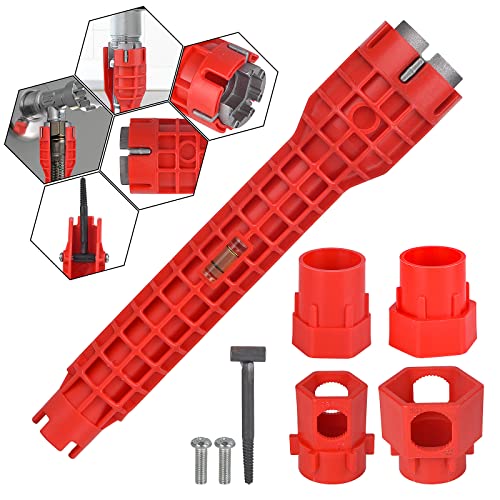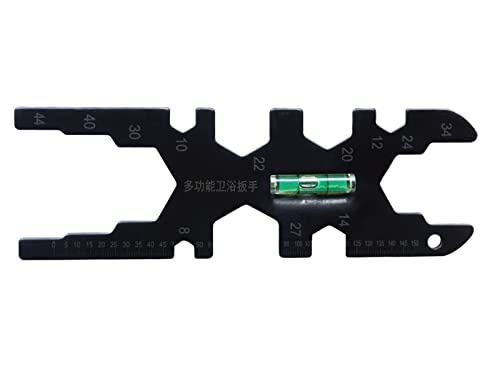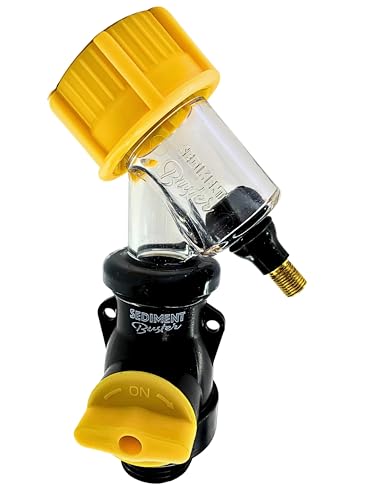So I take it I'm the only one having this problem? All Ive gotten is information that I already know and practice? Are the Lowes in northeast TN just selling faulty PRVs?
You are using an out of date browser. It may not display this or other websites correctly.
You should upgrade or use an alternative browser.
You should upgrade or use an alternative browser.
Are expansion tanks needed because newer heaters are weaker?
- Thread starter Seth_Hambrick
- Start date

Help Support Plumbing Forums:
This site may earn a commission from merchant affiliate
links, including eBay, Amazon, and others.
If you have working thermal expansion control and your water pressure continues to creep up, then you have a faulty pressure reducing valve.
Any more questions ?
Any more questions ?
Yes, why are so many of the pressure reducing valves faulty? Its like half the one's i'm putting in seem to have the issueIf you have working thermal expansion control and your water pressure continues to creep up, then you have a faulty pressure reducing valve.
Any more questions ?
Oh well that’s how the cookie crumbles. I can’t give answers as to why but if they’re not working and you’ve made sure it’s not thermal expansion then that’s all it can be.Yes, why are so many of the pressure reducing valves faulty? Its like half the one's i'm putting in seem to have the issue
I've also been informed (by valveman) that all prv will have creep, so without water use, pressure will go back up to the pressure that is before the prv. But open a tap, and it falls back down to where the prv was set.
If there is a prv that doesn't do this, I'd like to know the brand.
If there is a prv that doesn't do this, I'd like to know the brand.
- Joined
- May 12, 2024
- Messages
- 33
- Reaction score
- 22
It's not the psi it's the heat. Basically, a water heater is like a pressure cooker which - if I remember correctly - whistles when steam is released because of the heat. Even experienced plumbers sometimes don't realize the fact that increased pressure from the heat expansion needs somewhere to go, and when it's blocked by that check-valve in the PRV a home becomes what's known as a "closed-system", and the heat-pressure can't git past that PRV. // A lot depends on the size of the home, so bigger homes have more expansion ability and the PRV doesn't pop off even without an expansion tank. // All codes are based on minimums so if a code is tested on 1200 s.f. home, it - fortunately or unfortunately - is applied to all homes. In my area 3000 to 10,000 s.f. homes are the norm. // This need for an expansion tank code applies to tank heaters, not necessarily to on-demands which fire up only when used. Still, them-there always lovable and super-knowledgeable inspector types don't make exceptions. // I've said this before and I'll repeat: If a plumber doesn't follow code, no matter how idiotic it may seem, and a flood or fire ensues then home insurers will not pay, or at the very minimum will subrogate that plumber's insurance ... and we all know how premiums increase when we ask our friendly insurance companies to help us out. <- This is why my plumbers are ALWAYS required to do a whole-home plumbing inspection or they get an un-paid "holiday" ... or 3.

$42.56
$49.60
RIDGID 29983 Model 223S 1/4" to 1-1/4" Inner/Outer Copper and Stainless Steel Tubing and Pipe Reamer, Small
Amazon.com

$27.19
$32.15
RIDGID 57003 EZ Change Plumbing Wrench Faucet Installation and Removal Tool
Amazon.com

$4.99 ($1.00 / Ounce)
Latwne Kitchen Repair Plumbing Tool Sink Faucet Key Plumbing Pipe Four-Claw Wrench Bathroom Wrench Tool Sets 4 Bayonet
ShiYanShiXiaoZhuoShangMaoYouXianGongSi

$24.79 ($6.20 / Count)
$31.99 ($8.00 / Count)
1 Micron 2.5" x 10" Whole House CTO Carbon Water Filter Cartridge Replacement for Under Sink Water Filter System, Dupont WFPFC8002, WFPFC9001, FXWTC, SCWH-5, WHEF-WHWC, WHCF-WHWC, AMZN-SCWH-5, 4Pack
PUREPLUS FILTERS
An easy test would be before you go to bed turn the water heater off and any solenoid water valves, like an ice maker then look at the pressure gauge. Then look at it in the morning before any water is used.
If the pressure is high in the morning it has to be the PRV as you’ve eliminated thermal expansion.
If the pressure is high in the morning it has to be the PRV as you’ve eliminated thermal expansion.
They should have a different name for pressure reducing valve and pressure relief valve...
But as Mr. WAX says, turn off the wh... see if your pressure creeps up, but again according to valvman, all pressure reducing valves will creep up overnight (or with non use)
I know mine does... it's an apollo brand.
But as Mr. WAX says, turn off the wh... see if your pressure creeps up, but again according to valvman, all pressure reducing valves will creep up overnight (or with non use)
I know mine does... it's an apollo brand.
He’s wrongThey should have a different name for pressure reducing valve and pressure relief valve...
But as Mr. WAX says, turn off the wh... see if your pressure creeps up, but again according to valvman, all pressure reducing valves will creep up overnight (or with non use)
I know mine does... it's an apollo brand.
Well, I'll have to replace mine and see what happens. Do you have a brand that you like ? And stay away from big box stores ?He’s wrong
What’s your starting pressure before you regulate it ?Well, I'll have to replace mine and see what happens. Do you have a brand that you like ? And stay away from big box stores ?
In my case, I'm going from well house pressure 40-60 down to 15. To regulate the flow through my heat pump. As water pressure changes, the flow valve will allow different flows through the hp. Thats why the prv, I am trying to get a solid 4.5 gpm at 15 psi. The problem lies where the prv setting at 15 while water is flowing, when hp turns off the prv will allow the pressure to go back up to whatever house pressure is. You would think it should stay at 15. It is like the prv only works while the water is running.
Installing two PRV’s in-line will probably correct your problem. I’d have to look into it and know what model number valve you have now.In my case, I'm going from well house pressure 40-60 down to 15. To regulate the flow through my heat pump. As water pressure changes, the flow valve will allow different flows through the hp. Thats why the prv, I am trying to get a solid 4.5 gpm at 15 psi. The problem lies where the prv setting at 15 while water is flowing, when hp turns off the prv will allow the pressure to go back up to whatever house pressure is. You would think it should stay at 15. It is like the prv only works while the water is running.
Im Not use to dealing with pressures that low. You don’t want to drastically drop the pressure through one PRV. I’d have to look at spec sheet…….
I appreciate your effort, but that's ok, even though it does this, it does still function well enough to keep my flow between 4.5 - 5 gpm.Installing two PRV’s in-line will probably correct your problem. I’d have to look into it and know what model number valve you have now.
Im Not use to dealing with pressures that low.
But I believe this is the one I have.
https://www.amazon.com/Apollo-69ELF...1be472d3f3b6385c905d512f566630a0&gad_source=1
But, I would like a recommendation for when I do change it out of what brand you like.
Plug your numbers ACCURATELY into this sizing guide.I appreciate your effort, but that's ok, even though it does this, it does still function well enough to keep my flow between 4.5 - 5 gpm.
But I believe this is the one I have.
https://www.amazon.com/Apollo-69ELF...1be472d3f3b6385c905d512f566630a0&gad_source=1
But, I would like a recommendation for when I do change it out of what brand you like.
https://www.watts.com/resources/references-tools/prv-sizing














































